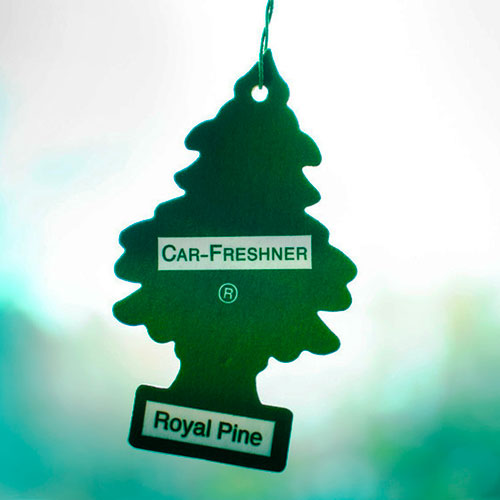

Who knew? That new car smell that we all love so much, right up there with pine trees and new shoes? It’s really the scent of volatile organic compounds that are emanating out of the vinyl and plastic in the door panels and dashboard! And with each appreciative whiff, we’re breathing them in!
 Organic compounds are chemicals that contain carbon and are found in all living things. Volatile organic compounds, also known as VOCs, are organic compounds that easily become vapors or gases. Along with carbon, they contain elements like chlorine, fluorine, hydrogen, oxygen, sulfur, bromine or nitrogen.
Organic compounds are chemicals that contain carbon and are found in all living things. Volatile organic compounds, also known as VOCs, are organic compounds that easily become vapors or gases. Along with carbon, they contain elements like chlorine, fluorine, hydrogen, oxygen, sulfur, bromine or nitrogen.
VOCs include compounds like formaldehyde, polybrominated diphenyl ethers (PBDEs) used as flame retardants, and phthalic acid esters (phthalates), which are emitted from materials and finishes used to make car interiors—things like plastics, textiles, seat cushions, glues, sealants, wood and leather.
The known health effects of VOCs on humans vary from highly toxic to none at all. For many, exposure to these substances can make allergy and asthma symptoms worse and cause eye, nose and throat irritation as well as coughs, headaches, flu-like symptoms and even skin irritation. Some, like formaldehyde, also are known to cause cancer and neurological effects.
You can’t very well reduce VOCs with house plants in your car like you can do at home, but there is good news. Automakers are now working to reduce VOCs. For example, Toyota plans to increase its usage of low-VOC paints and is working with suppliers to reduce formaldehyde, and Ford is now using soy-based foam instead of petroleum-based. If you suspect VOCs may be in your vehicle, there are steps you can take to reduce them:

One final note: If you’re someone who enjoys a ride that’s pleasantly scented, you’ll want to steer clear of those fragranced cardboard air fresheners. Care2.org reports that many popular cardboard air fresheners contain a proprietary mix of chemical ingredients that can lead to headaches, nausea, breathing difficulties and/or dizziness.
Rather than bringing even more harsh chemicals into your car’s interior, why not choose a more natural option to get the fresh clean scent you want? I’d suggest a set of our new Norwex ceramic Car Vent Clips with one of our Essential Oils!
Resources:
Yes, I am aware of the effects of VOCs! My sister-in-law bought a new car earlier this year and had a severe asthma attack after driving in it for several hours. She had to “bake” it as mentioned in the article. She also had the car detailed.
Wow! This is good information. I knew the “new car” smell couldn’t be good, but didn’t realize just how bad it actually is. Thanks for the info.
“New car” scent has bothered me since childhood. It often makes me feel car sick. I have to drive with the window cracked open pretty much year round! The scent disc is a great way for me to have a scent other than plastics.
I always use essential oils in my car. My favourite is mint and citrus. I have been asked why my car always smells like a Pina Colada 😉
Haha, thanks for sharing Sharon! Glad to know you’ve found a safer way to scent your car!
Ugh, I used to be addicted to the “pine green clean” smell! So glad i finally stopped using those!!
Cars and homes have a lot of chemicals in their components. It’s amazing that humans are still alive!!!
The car vent clips are my new favorite product!!
I am aware of that and also aware of the VOC’s in some of the familiar ‘dollar stores’ or other low-price chain stores that have ridiculously low prices. They smell full of VOC’s
Yes, we are doing what we can to reduce VOCs in our home. I love the tips for getting them out of your car, and I absolutely love my new fragrance disc with my favorite EO!
Good to know.
I just bought a “new” used car and the dealership had a vent clip scented item in it. Although I threw it out right away, the car still smells and it aggravates my allergies & asthma. I’ve aired it out and am cleaning it out. I need to put in my Norwex Air Freshener bag in to see if it can absorb some of this stink! Any additional smells will likely come from essential oils or when I haul home fresh cut greenery.
Those sound like much safer alternatives! Thanks for sharing, Jeanette!
Norwex needs to start selling vinyl UV protector…then there would be a FULL green clean car package!! I hate having to use Armorall!
This article was so informative. I was talking to my sister about it last night and the side effects of the car freshener…she realized she has had a headache since putting it in her car and now suspects that might be the reason. Thank you
I was not aware of this!! My husband just purchased a new vehicle and we were all saying today how we loved the new care smell! It’s time to get my Norwex Envirocloth out and clean the interior. He may not be pleased, but he will understand after i tell him about this article. thank you!!
Thanks for sharing, Amy, and thanks for spreading the word to your husband also. The more we know, the bigger the impact we can make at home—and on the road!